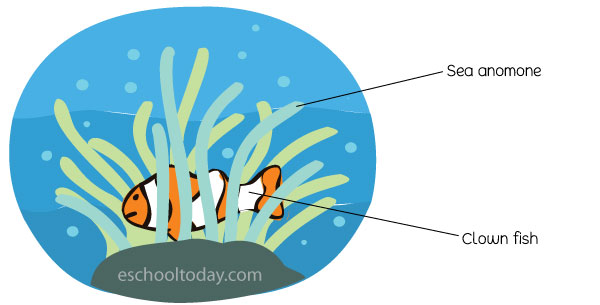- Symbiosis
Symbiotic Relationship
In our ecosystem lesson, we learned about the wonderful relationship between living things and their environment. Particularly we learned that abiotic factors (physical or non-living factors) are a key part of ecosystems. But there would be no ecosystem without the biotic factors (living things). For living things to continue existing, they need to interact among their species and with each other species to find food, shelter, space, and so on. In this lesson, we will look at interactions among biotic factors (living things) in an ecosystem.
Many living things depend on each other (same species), or other living things (different species) to survive. Sometimes these relationships can be temporal or permanent. These relationships could be partnerships with animal species, plants, and also with microorganisms.
Symbiosis
The biological word for different species of organisms living together to survive is Symbiosis. Note that symbiosis refers to relationships between species in which at least one member of the relationship benefits. In short, Symbiosis means “Living Together”

Whenever two living things or species live together in a symbiotic partnership, five things may happen:
- Both parties can benefit from the partnership.
- One party can benefit whiles the other does not care or is not harmed.
- One party benefits at the expense of the other (the other loses or is harmed).
- One party targets and consumes the other party
- Both parties may compete for limited resources to survive
The biological terms to describe all five symbiotic scenarios are Mutualism, Commensalism, Parasitism, Predation, and Competition.
Now we shall look at Mutualism as a Symbiotic Relationship.
